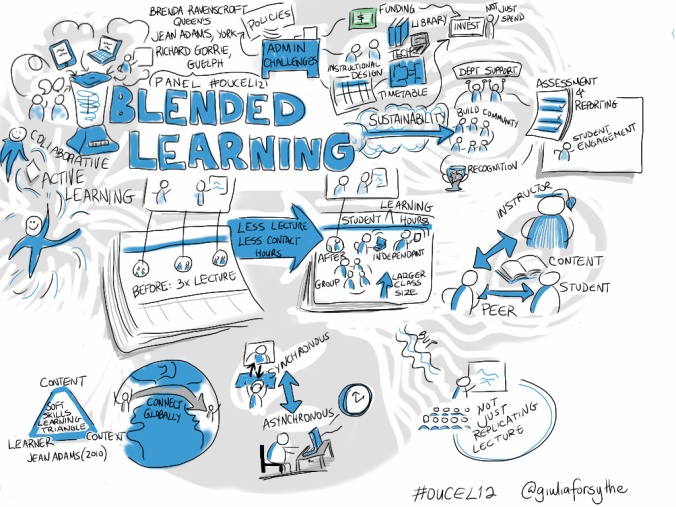
When developing a hybrid class, even given materials from a traditional class, the instructional designer should still go through the ADDIE process, even an abbreviated one. Analysis of what the students need to be able to do or know at the end of the class is vital. “Distance education is not identical to face-to-face education, but it is equivalent” (Laureate Education, n.d.a). This means that when converting from face-to-face to a hybrid course, they should have the same learning objectives and experiences. This includes having a course designed using a valid learning theory, such as the Theory of Independent Study by Charles Wedemeyer, the Theory of Transactional Distance by Michael Moore, and Andragogy by Malcom Knowles (Laureate Education, n.d.a; Simonson, Smaldino & Zvacek, 2015). Some objectives might be better suited to an online portion, and some face-to-face activities might also be transitioned into online activities. “Some material can be delivered just as well online and give students the opportunity to look at it when they are most prepared to do so, rather than on (the instructor’s) timetable” (Dekhane, Napier, & Smith, 2011).
The design of the course should have good learning objectives and a clear way to evaluate the students, as well as meaningful online activities. A storyboard could help in this aspect, especially when deciding which activities to keep as face-to-face and which to convert to online activities. The activities must be bound to a learning objective, and the course should be the same amount of work that would be completed in a traditional course.
There are various ways to encourage trainees to communicate online. Lorenzetti attended a seminar in which Joan Thormann provides six techniques (2012):
- Optimized use of introductions (sharing personal information)
- Use of the instructor as a model (good feedback with expectations)
- Use of a clear grading system (grading discussionswith guidance)
- Use of student moderators (rotational peer review)
- Use of voice conferences (strengthens overall communication)
- Development of supportive forums (student to student communication)
“Course management software offer tools that promote communication with students in the ways that are more natural for them – things like sending instant messages, online chat, email notifications of new content being available, etc.” (Dekhane, Napier, & Smith, 2011, p. 28)
In the end, students coming out of a hybrid course should be able to perform the same tasks or know the same knowledges as a traditional class, but might have a deeper understanding or more communication than a traditional class.
References:
University of Washington Bothell Hybrid Learning (n.d.). Couse Syllabi Checklist. Retrieved from http://www.uwb.edu/learningtech/hybrid-and-online-learning/online-learning/faculty-resources/online-learning-course-syllabi-checklist
Dekhane, S., Napier, N., & Smith, S. (2011). Transitioning to blended learning: understanding student and faculty perceptions. Journal of Asynchronous Learning Networks, 15(1), 20-32.
Hybrid Courses (n.d.). Ten questions to consider when redesigning a course for hybrid teaching and learning. Retrieved from http://www4.uwm.edu/ltc/hybrid/faculty_resources/questions.cfm
Laureate Education (Producer). (n.d.a). Theory and distance learning [Video file]. Retrieved from https://class.waldenu.edu
Laureate Education (Producer). (n.d.b). Planning and designing online courses [Video file]. Retrieved from https://class.waldenu.edu
Laureate Education (Producer). (n.d.c). Developing online courses [Video file]. Retrieved from https://class.waldenu.edu
Laureate Education (Producer). (n.d.d). Facilitating online learning [Video file]. Retrieved from https://class.waldenu.edu
Lorenzett, J. P. (2012, November 12). Six wasy to get your online students participating in a course. Faculty Focus. Retrieved from http://www.facultyfocus.com/articles/online-education/six-ways-to-get-your-online-students-participating-in-the-course/
Simonson, M., Smaldino, S., & Zvacek, S. (2015). Teaching and learning at a distance: foundations of distance education. Charlotte, NC: Information Age Publishing, Inc.
photo credit: <a href=”http://www.flickr.com/photos/59217476@N00/7704609288″>Blended Learning Panel @richardgorrie et al [visual notes] #oucel12</a> via <a href=”http://photopin.com”>photopin</a> <a href=”https://creativecommons.org/licenses/by-nc-sa/2.0/”>(license)</a>